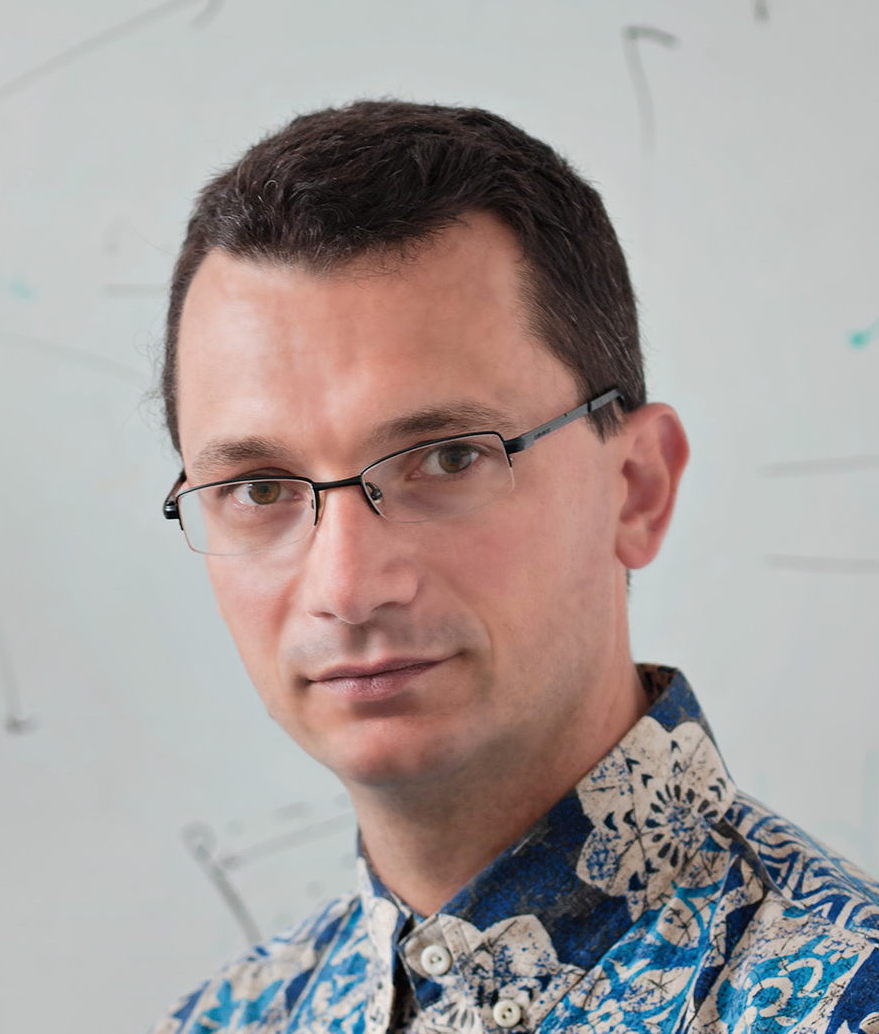 Jan Kybic was born in Prague, Czech Republic, in 1974. He received a Mgr. (BSc.) and Ing. (MSc.) degrees with honors from the Czech Technical University, Prague, in 1996 and 1998, respectively. In 2001, he obtained the Ph.D. in biomedical image processing from Ecole Polytechnique Federale de Lausanne (EPFL), Switzerland, for his thesis on elastic image registration using parametric deformation models. Between October 2002 and February 2003, he held a post-doc research position in INRIA, Sophia-Antipolis, France. Since 2003 he is a Senior Research Fellow with Department of Cybernetics, Faculty of Electrical Engineering, Czech Technical University in Prague and passed his habilitation (Associate Professor) in 2010 and became a full professor in 2015. He was a Vice-Dean in 2011-2013 and a Department Head in 2013-2017. Jan Kybic has authored or co-authored 31 articles in peer-reviewed international scientific journals, one book, two book chapters, and over 80 conference publications. He has supervised nine PhD students, six of them have already successfuly graduated. He has also supervised over twenty master, bachelor and short-term student projects.
Jan Kybic was born in Prague, Czech Republic, in 1974. He received a Mgr. (BSc.) and Ing. (MSc.) degrees with honors from the Czech Technical University, Prague, in 1996 and 1998, respectively. In 2001, he obtained the Ph.D. in biomedical image processing from Ecole Polytechnique Federale de Lausanne (EPFL), Switzerland, for his thesis on elastic image registration using parametric deformation models. Between October 2002 and February 2003, he held a post-doc research position in INRIA, Sophia-Antipolis, France. Since 2003 he is a Senior Research Fellow with Department of Cybernetics, Faculty of Electrical Engineering, Czech Technical University in Prague and passed his habilitation (Associate Professor) in 2010 and became a full professor in 2015. He was a Vice-Dean in 2011-2013 and a Department Head in 2013-2017. Jan Kybic has authored or co-authored 31 articles in peer-reviewed international scientific journals, one book, two book chapters, and over 80 conference publications. He has supervised nine PhD students, six of them have already successfuly graduated. He has also supervised over twenty master, bachelor and short-term student projects.
He is a member of IEEE and served as an Associate Editor for IEEE Transactions on Medical Imaging and as a reviewer for numerous international journals and conferences. He was a general chair of the ISBI 2016 conference.
His research interests include signal and image processing, medical imaging, image registration, splines and wavelets, inverse problems, elastography, computer vision, numerical methods, algorithm theory and control theory.
He teaches Digital Image Processing and Medical Imaging courses.
Accelerating image registration
Image registration is one of the key image analysis tasks, especially in biomedical imaging. However, accurate image registration methods are often slow and this problem is exacerbated by the steadily increasing resolution of today’s acquisition methods. In my talk, I will present two of my relatively recent ideas, how image registration can be accelerated.
First, we take advantage of the fact that image registration is mostly driven by image edges. We take this idea to the extreme. We approximate the similarity criterion by sampling only a~small number of sparse keypoints and consider only normal displacements. Furthermore, we simplify images by segmenting them first. The segmentation can be performed jointly and alternated with the registration steps. Compared to classical image registration methods, our approach is at least one magnitude faster.
The second approach is based on matching generalized geometric graphs and is suitable for images containing linear structures with branches, such as road networks, rivers, blood vessels or neural fibers. Previously used methods could only match relatively small graphs, required good initial guess of the transformation, or could not be used for non-linear deformations. We present two methods which do not have such limitations – one is based on active testing and the second on Monte Carlo tree search, formulating the problem as a single player game. Our method can handle thousands of nodes and thus match very large images quickly. Besides several medical applications, we show for example, how to solve the localization problem by matching a~small aerial photo with a~large map.
His talk takes place on Thursday, March 1, 2018 at 13:00 in room E104.